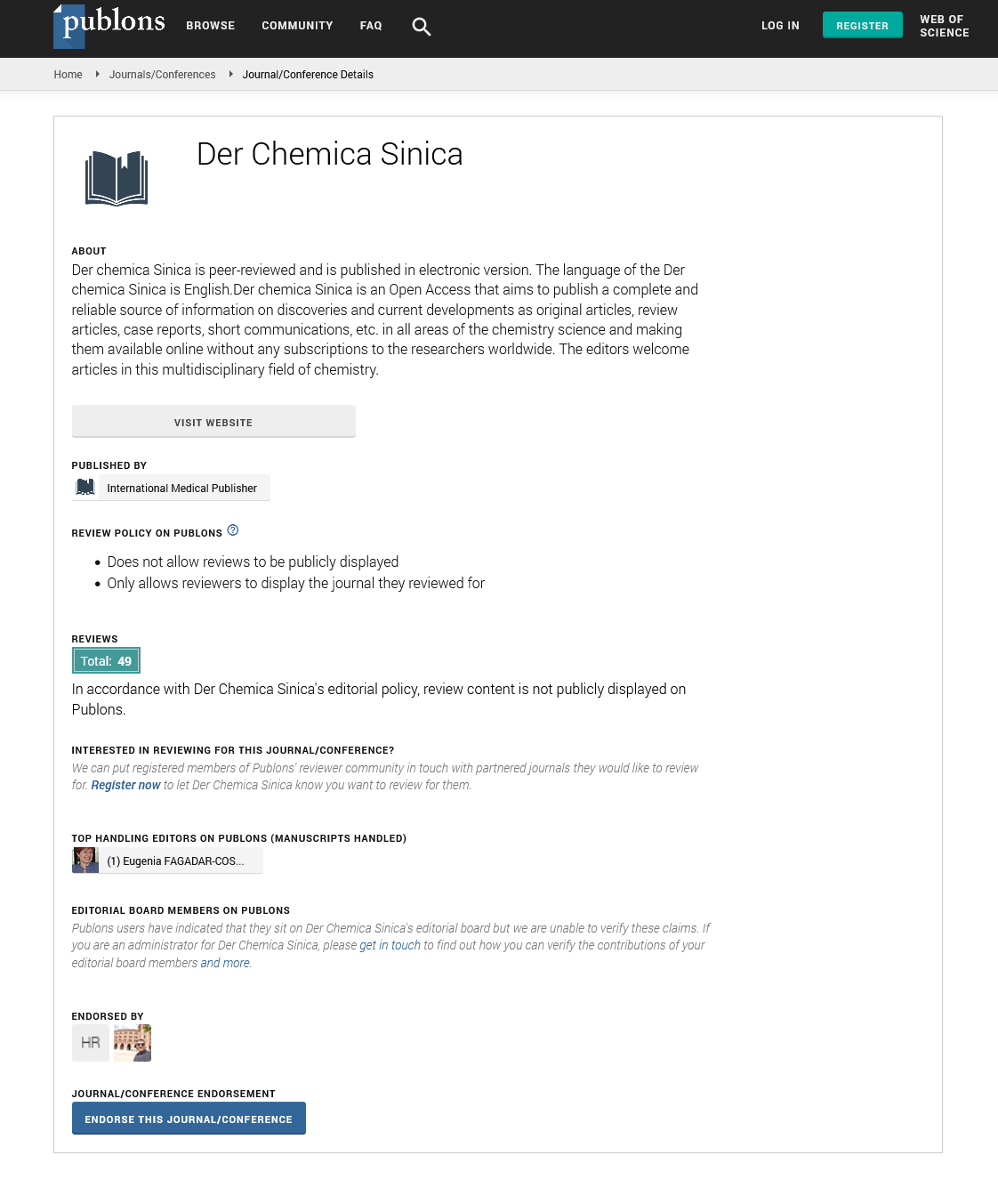ISSN : 0976-8505
Der Chemica Sinica
Abstract
Synthesis and Antimicrobial Activity of Polysiloxanes Polyurethane Biocidal Polymers as Surface Modifiers
Complex epidemiological situation, nosocomial infections, microbial contamination, and infection risks in hospital and dental equipment have led to an ever-growing need for prevention of microbial infection in these various areas. Macromolecular systems, due to their properties, allow one to efficiently use them in various fields, including the creation of polymers with the antimicrobial activity. N-halamine siloxane coatings can be rendered biocidal by exposure to dilute bleach. Once the bound chlorine is lost from the coatings, it can be regenerated by further exposure to dilute bleach. Polysiloxanes with 3-(alkyldimethylammonio) propyl pendant groups was synthesized by quaternization of n-octyldimethylamine with linear polysiloxanes containing 3-chloropropyl groups attached to silicon atoms. The polysiloxanes bearing quaternary ammonium salts (QAS) showed bactericidal activity when incorporated in a polysiloxane network. The activity was retained after 60 days of immersion in water. This paper briefly highlights mechanism of action, synthetic schemes and biocidal efficacy data as well as major applications of antimicrobial polymers
Author(s): Songara Kunjan Singh, Jain Anamika, Sharma Dipak and Dubey Arti
Abstract | PDF
Share This Article
Google Scholar citation report
Citations : 6019
Der Chemica Sinica received 6019 citations as per Google Scholar report
Der Chemica Sinica peer review process verified at publons
Abstracted/Indexed in
- Google Scholar
- Open J Gate
- Genamics JournalSeek
- China National Knowledge Infrastructure (CNKI)
- Directory of Research Journal Indexing (DRJI)
- Publons
- MIAR
- International Committee of Medical Journal Editors (ICMJE)
- Serials Union Catalogue (SUNCAT)
- Geneva Foundation for Medical Education and Research
- Secret Search Engine Labs
- Euro Pub
- CAS (Chemical Abstracting Services)
- University of Barcelona
Open Access Journals
- Aquaculture & Veterinary Science
- Chemistry & Chemical Sciences
- Clinical Sciences
- Engineering
- General Science
- Genetics & Molecular Biology
- Health Care & Nursing
- Immunology & Microbiology
- Materials Science
- Mathematics & Physics
- Medical Sciences
- Neurology & Psychiatry
- Oncology & Cancer Science
- Pharmaceutical Sciences
